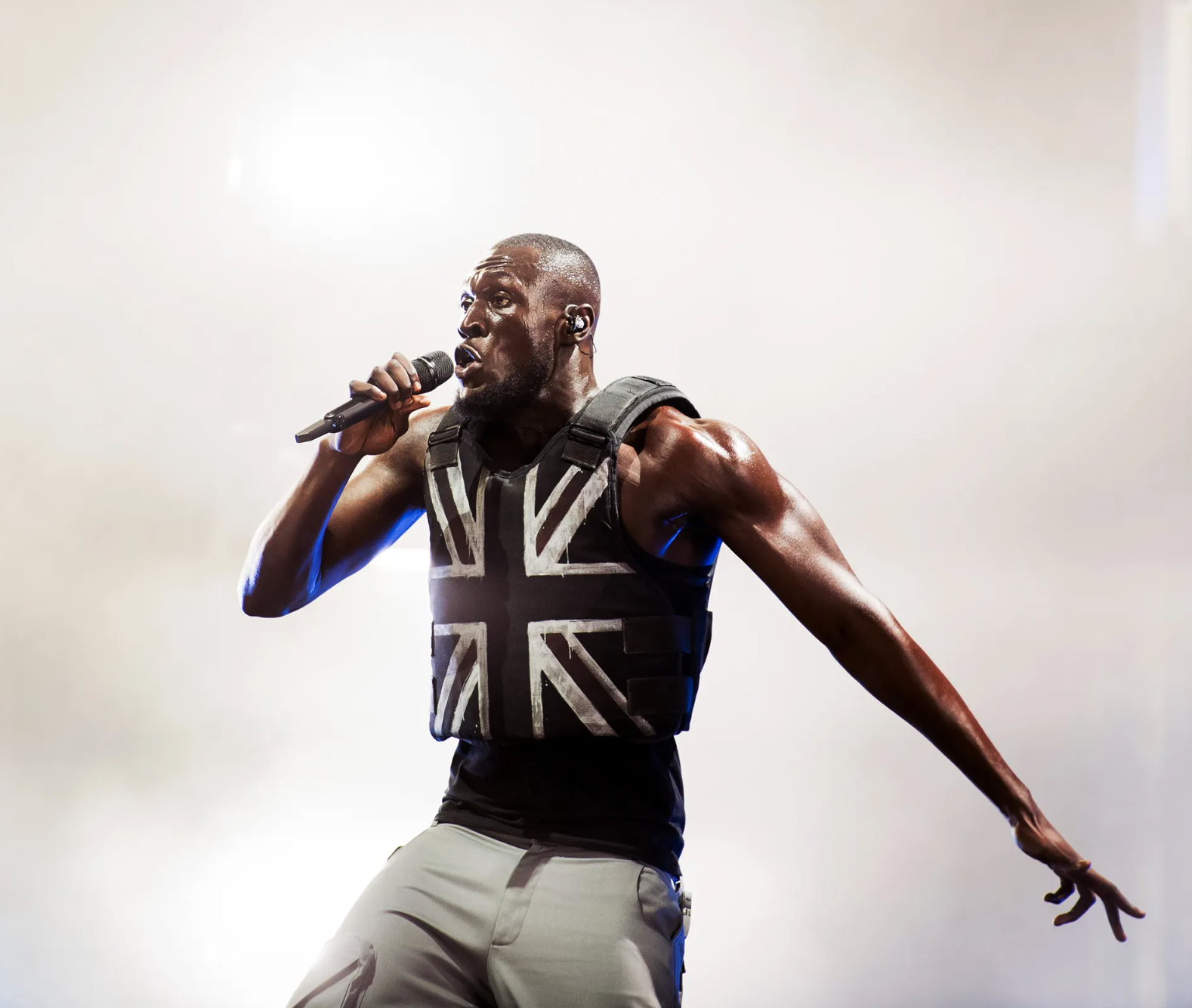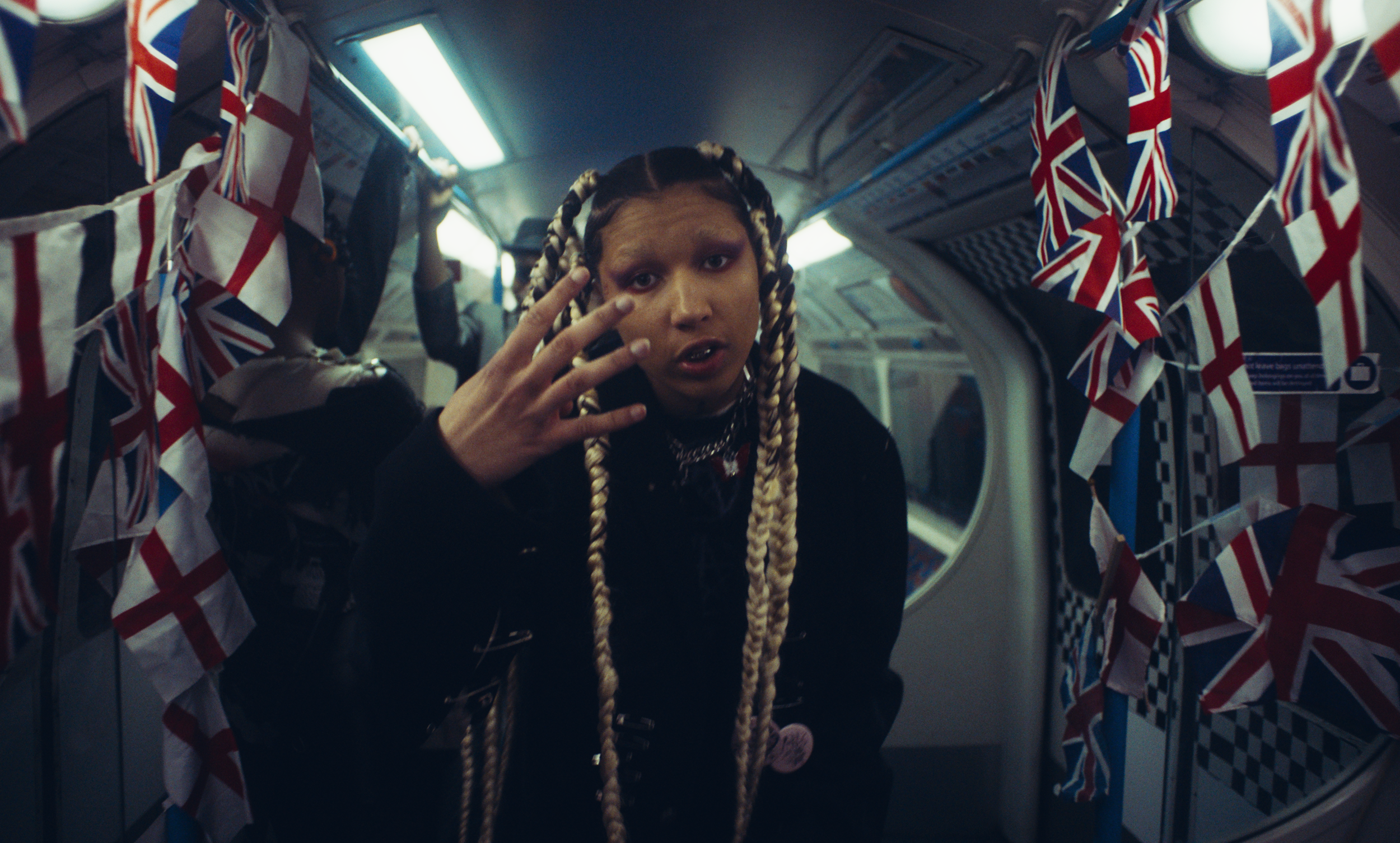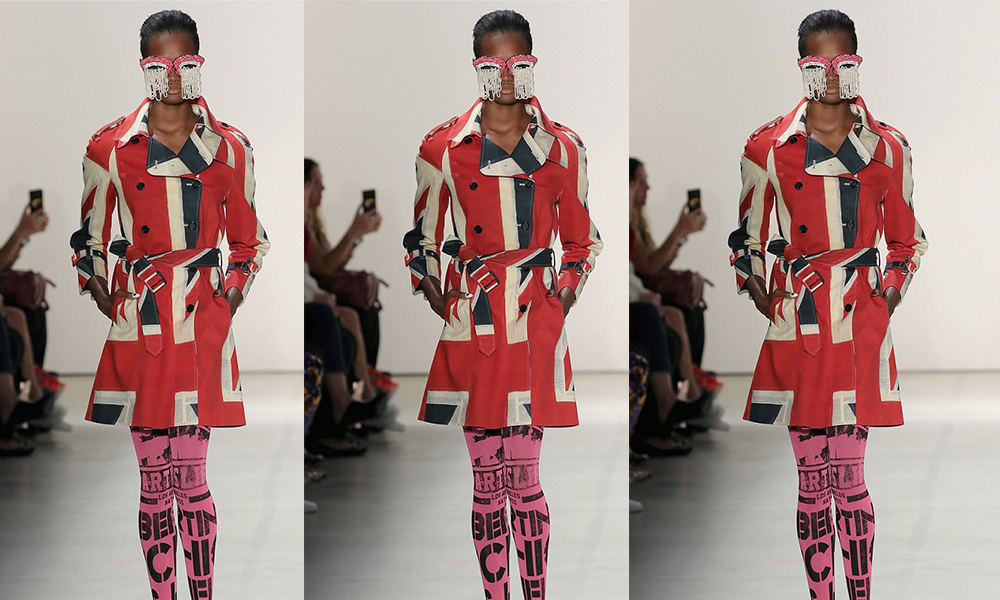Union Jack Fashion: What Does It Mean Today?

Header photograph by Samir Hussein courtesy of WireImage/Getty.
The Union Jack. Its stronghold in fashion has seen it grace runways, concert stages and the streets, but the popularity of Union Jack apparel is struggling to come back around with other trends once popular at its time.
The red, white and blue stripes symbolising the Island of Great Britain stormed into the fashion world post WW2 amidst a newly found patriotism after the country’s victory. In the swinging sixties, the design was seen on the coolest of the cool, the most iconic being Twiggy and The Who. Donning clothing inspired by the flag became a mainstream way to show off national identity and pride in the country. There was much to feel pride about for mainstream trendsetters. The country was in the midst of an economic boom spitting out British-born celebrities, world-famous musicians and new, modern, expressive styles like pop art. Britain felt like a place brimming with opportunity, and Union Jack fashion thrived on this wave.
Flag apparel continued to boom throughout the seventies, albeit in a different way. The punk scene deconstructed the flag’s meaning, using it satirically to promote anti-establishment ideals and flipping the iconography into gestures of anarchy and rebellion. In the same decade, the flag saw, arguably, its darkest adoption. The National Front, which later became the British National Party, twisted the flag that once held so much pride and added the slogan ‘Keep Britain White’, essentially forever changing how many interpret the Union Jack’s meaning.
These two adoptions continued to fight one another before music, again, stepped in to use the iconic design. Nineties Brit-pop used the Union Jack to promote a different kind of British pride, not to reference politics or the ruling class, but one of cultural pride and celebrating the good of average Brits. The Union Jack kept Brit-pop British, showing love for the genre so synonymous with the Island we find ourselves on.

The flag has continuously been seen on the bodies of musicians no matter the decade. Its biggest starring role recently was during Dua Lipa’s 2021 victory performance at the Brits. The singer’s whole performance was an ode to British music history featuring an Amy Winehouse beehive hairdo and a custom made, hand-painted Vivienne Westwood Union Jack dress and matching skirt. The look referenced the iconic Ginger Spice bodycon number at the same awards in 1997. Despite the outfit’s differences, everyone could see this is what Lipa was doing; she wasn’t boarding anywhere near a political statement.
Stomzy’s donning of the flag, on the other hand, was nothing but a political statement. His headline performance at Glastonbury in 2019 coincided with the height of chaotic Brexit tensions. His vest, emblazoned with a Union Jack logo designed by Banksy, wordlessly altered this fashion statement to a political one. The faded monochrome colour, the body armour style, and the dripping paint were all as far away from the bright reds and blues of the nationalistic flag as you could get. This was no embracing of ideals; this was a critique. This performance took place a year before Dua Lipa’s, yet the two interpretations of the Union Jack couldn’t be further apart. Lipa’s was a fashion choice, a clear appreciation of British music culture working alongside her pop medley. Stomzy placed the flag in a new context, highlighting dissatisfaction to accompany his politicised lyrics.

Tory politicians have bombarded the public with the flag, ramming it down our throats at any opportunity, not dissimilar to the way the BPD and National Front adopt the flag. When they decided to actually wear masks at the height of the pandemic, they were often printed with the Union Jack, and many seemingly insisted on standing in front of the flag during TV interviews. In March 2020, the Department for Digital Culture, Media and Sport released new guidance stating that Union Jack flags should be flown on all civic buildings, including schools, every day. Some even went so far as to suggest school children should pledge their allegiance to it each morning. After Brexit, the increasing momentum in Scotland for independence, and a legacy of far-right political associations, can the flag be worn as a fashion statement and nothing else? Or does context derive meaning?
Arguing the first, in the current decade, the concept of patriotism is brightly highlighted – and double-underlined. What does patriotism really mean today? What have we got to be patriotic about? When we have politicians wearing and pushing the politicisation of the flag, those on the other end of the political spectrum wearing it surely is a political statement.
Or, are we just reading too much into it? Does everything have to be political? There’s no doubt that wearing Union Jack apparel has a connection to Great Britain, but we can argue that fashion has repurposed the meaning of the flag. The print can range from being purposefully disrespectful to the intended meaning to just showing appreciation to British culture separate from politics.

West London rapper, designer and founding member of arts collective NINE8, Ava Laurel, aka Lava La Rue, has a clear view on Union Jack clothing which will come as no surprise to fans of their music. They shared their thoughts on Union Jack fashion with us and explored the culture they associate with the flag.
“I was born with two first-gen/second-gen migrant parents but identify as British born and raised. For me personally, as someone who is both Jamaican and British, reclaiming the colonial British flag feels like an ownership of an identity that I’ve had to fight both for and against.”
“As someone who is also Black and queer, my communities have reclaimed words and slurs that have been used against us, and now we use them with ownership and pride – so it isn’t totally bizarre to make a fashion statement using a flag that once represented our oppressors. We use it in the sense of ‘you may have brought me here, but this is MY country now. I’m Black, British and proud.’ At least that’s how I wear the British flag.”
Most of the time, when we see someone wearing a Union Jack print, we identify it as punk, not as a show of British pride. Like Dua Lipa’s Brits outfit, it can also act as a homage to the 1990s, something today’s fashion is never short of. For Lava La Rue, wearing the flag is an act of ownership. Still, with its associations, many find it hard to reframe the flag that represents a past many don’t want to claim as their own.

We can see the flag has different meanings in different contexts, but these contexts may be hard to define when simply walking down the street. It’s something even Lava La Rue has found, with commenters, despite their clear anti-racism messaging across the platform, asking if they’re racist. ‘Is this person fashionable or are they a nationalist, or a tory, or a fan of brit-pop?’ – these uncertainties of how the flag will be interpreted by others around us perhaps are what’s keeping the trend from coming back to the masses.
Sure, fashion houses with published, well-known ideals can sartorially use the print or a punk band or fan can rip up the design to demonstrate their views on it, but a Union Jack number in the club? It’s hard to decipher that one.
Discover more from GUAP’s Fashion section here




![ZINO VINCI’S ‘FILTHY & DISGUSTING’EP BRINGS YOU TO THE CORE OF THE ARTIST [@ZinoVinci]](https://guap.co/wp-content/uploads/2023/10/Zino-4.jpg)



